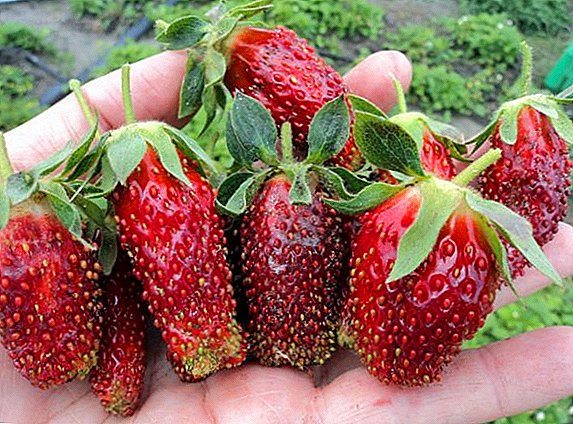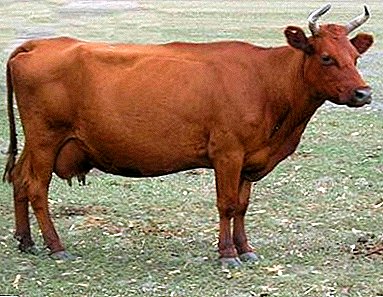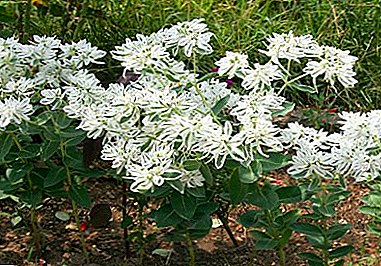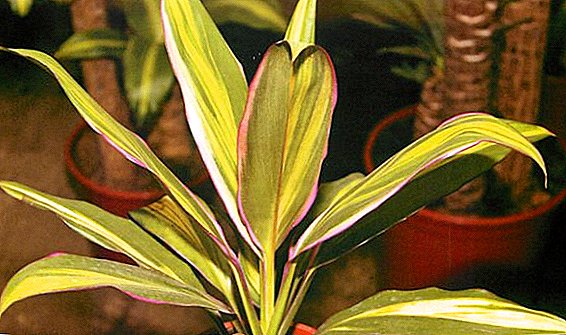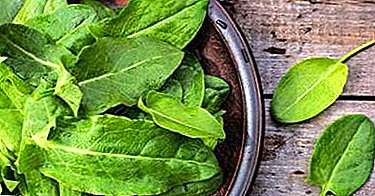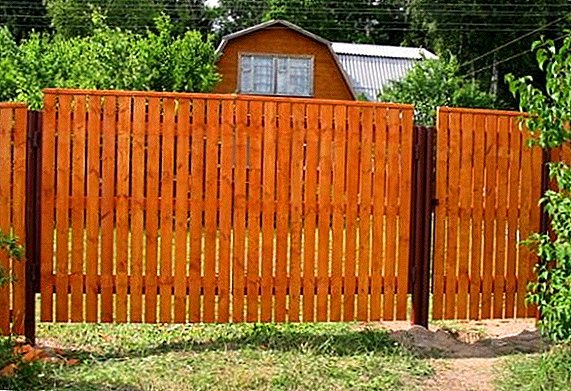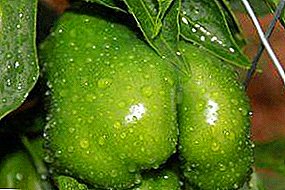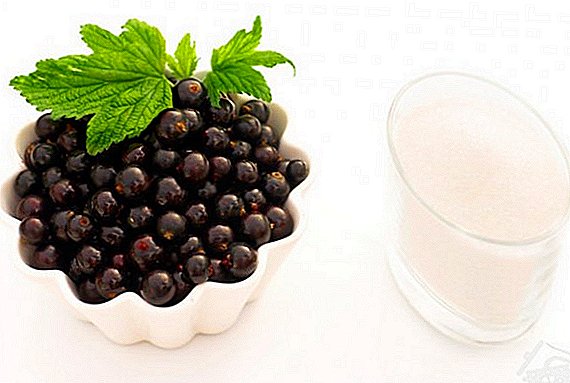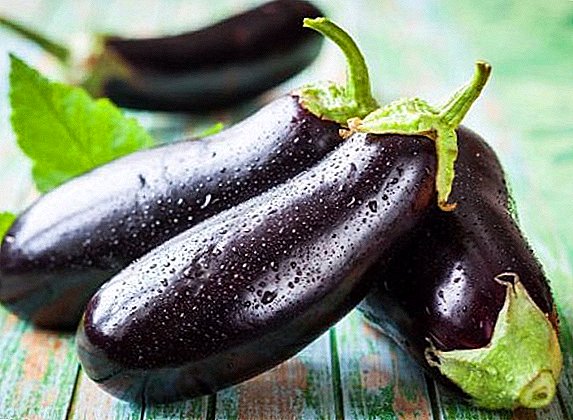 Eggplant "Prado" Japanese selection, also known as "Kitano", is a very good choice for planting at the dacha: it ripens early, bears fruit very well, easily adapts to climatic conditions, its fruits are delicious, very fragrant and, besides, long are stored. All this speaks in favor of choosing this variety for planting on its own plot.
Eggplant "Prado" Japanese selection, also known as "Kitano", is a very good choice for planting at the dacha: it ripens early, bears fruit very well, easily adapts to climatic conditions, its fruits are delicious, very fragrant and, besides, long are stored. All this speaks in favor of choosing this variety for planting on its own plot.
Description and characteristics of the variety
Eggplant "Prado" refers to the rare, but very interesting variety of this member of the nightshade family - wrist. As you can guess, their fruits are formed on a branch not alone, but with brushes - several pieces at once (from two to four).
The fruits are large (sometimes more than 200 g each), very beautiful, have a pear-shaped rather than elongated shape, dense structure and rich glossy dark purple color.
Read also about the cultivation of the variety "Clorinda F1", which can be grown in open ground and in the greenhouse.
Tastes for Kitano are also excellent: fruits are not bitter, soft skin (this allows using such eggplants in dishes that do not imply cleaning them), the vegetable itself is fleshy and very fragrant, there are few seeds in it compared to other species.

Fruits are stored for a long time and can easily carry long shipments.
Fruiting in this variety is constant and abundant, it adapts well to the natural conditions offered to it, that is, in simple terms, it is very unpretentious.
Important! Eggplant "Prado"- this is a hybrid. That is why, if you like the variety, do not try to save the seeds for planting next year - the harvest will be bad. You need to grow such vegetables only from purchased seeds, and this is their main drawback. However, if you consider that the price bag - penny, it is not necessary to talk about the shortcomings.
The best place and predecessors of culture
Eggplants are fairly simple in growing and caring, but in order for the crop to be truly worthy, you need to know the main features of this crop.
Did you know? Eggplants are not only "blue" (more precisely, purple), but also white, striped, green, red and orange. However, the darker the color of this vegetable, the more useful it is. This rule, by the way, applies to grapes.

Choosing a landing site
Crop planning is an important agrotechnical device. In particular, it is always necessary to take into account which vegetables are more demanding to light, which are less, and “build” the beds in such a way so that light-loving cultures are not shadedl higher plants.
Important! Light for eggplant - the main condition for a good harvest. If you plant it in the shade, it will grow poorly, and the fruits will be small and frail. It is not without reason that in the cloudy summer in the bazaar blue ones are always scarce, and they cost more than usual.
It is also important to choose a place for blue ones that is protected from sudden gusts of wind, as they can greatly harm the plant, especially until it gets stronger.
Important! Eggplant - plants with a complex character. Never mix them with other cultures and try to place the garden as apart as possible. Little blue reacts poorly to competitors.
Growing soil

Fertile soil is needed by the plant in much the same way as light. The blue ones prefer light soils with good drainage. You can successfully grow them on loam. If the land in your area is too heavy, before planting seedlings need to be diluted with peat and humus (per square meter of 10 liters of both).
For growing seedlings, the soil mix can be prepared from turf land and wood ash, or from humus, peat and sawdust (2: 2: 1), or turf land and humus and the addition of a small amount of phosphate fertilizers and wood ash.
Then plant eggplants
Eggplants grow well in the beds, where cucumbers, cabbage (all kinds) or legumes were placed last year. Good predecessors are beets or carrots, but not potatoes.
Important! Eggplants belong to the nightshade family, which means that according to the rules of crop rotation, they cannot be planted after tomatoes, peppers, potatoes and other "relatives".
Breaks in the planting of related crops is desirable to withstand at least three let.

How to plant seeds "Prado"
Growing eggplants in the open field is preceded by a long and fascinating process of obtaining seedlings (you can, of course, buy ready-made, but it is more expensive, not so interesting, besides, there are no guarantees that you will be able to find the Prado, or will be offered as "Prado", is it in reality).
Rassadny way also grown: cabbage Kale, Savoy, white cabbage, tomatoes, peppers, parsnips, beets, turnips, zucchini.
Terms of planting vegetables
Begin to engage in seedlings need in February.
Eggplants grow very slowly, much longer than, say, tomatoes, so the "overexposure" of seedlings on the windowsill does not threaten you. Focus on the climate in your area, between sowing and disembarking in open ground, you should have at least two and a half months in reserve, and even more, better.
You can, of course, reduce this period if you are ready to highlight the seedlings artificially. You can also relax a little if there is always a lot of sun on your windowsill (the problem is that the spring may be overcast and there will be no sun anywhere). But, in any case, the end of February is the deadline.
Seed preparation for planting
Seed preparation for planting involves several steps. Experienced gardeners know that sometimes even seeds purchased in one place behave differently in different years. therefore it is recommended to start by checking what you bought.
It is better to lose a few days at a time to conduct a small test than later, after making sure that nothing germinates, to run for new seeds when April rages on the street.
So, we select several seeds from the bag, wrap them in gauze folded in several layers, drop them into warm water, take them out, wrap them in a plastic bag and put them on the battery (the temperature of the medium inside the bag should be up to 30 degrees, so if you have too many batteries hot, put a towel between the heat source and the package).
Three days later, we check the results of the experiment: if the majority of seeds have “hatch”, the material is OK, if not, go to the store for new seeds (make sure that you do not slip goods from the same batch, or ask for seeds from another manufacturer).

Now prepare the seeds for planting. We recommend to buy in a specialized store special seed steamerIn this case, the seedlings appear faster, and the seedlings are strong and healthy. Soak the seeds in the manner described above for germination.
To get the seedlings faster, you can use the roots: "Kornevin", "Etamon", "Ekosil", "NV-101".
To improve the result, germinated seeds should be placed in the refrigerator (on the warmest shelf) for a day, then put in a warm place for another two days and again in the cold. After such a "contrast soul," our seedlings will receive excellent immunity from spring temperature drops.
While the seeds are tempered, let's do the containers. Ideal - ready-made cassettes for seedlings, but you can use low boxes. We fill the pre-prepared soil mixture with a layer of 10 cm, spray the surface with a weak solution of potassium permanganate and let stand for several hours. Now everything is ready for landing.
Sowing scheme
We put 1-2 seeds in cassettes for seedlings (it is better to put them not side by side, so that if both germinate, they can be separated without damaging the spine), in the boxes we sow in rows at a distance of 4-5 cm from each other (for this purpose in it is better to draw shallow grooves at first). Between seeds leave 1.5-2 cm.
Important! It is believed that eggplant seedlings do not need to dive, as this culture is very difficult to bear any interference in their "life."If you see that the plants are too crowded, we take each specimen into a separate glass with all the precautions.
From shoots that sprouted in cassettes, you need to choose the strongest, because, trying to separate them from each other, you risk damaging both (first carefully pull out the excess, and then do the picking together with the earthy clod).
But with enough experience, when it is difficult to make a choice, you can divide the sprouts and save both plants.
Important! If you dive eggplants, do it as early as possible, so the more chances not to damage the plant: the more seedlings there are, the worse it will suffer the "move"!
Watering seedlings after picking is not necessary for the first few days, it will be easier for the plant to take root. For irrigation, use not cold, but warm water.
Planting seedlings in open ground
Do not rush to plant the little blue ones in the garden until the weather has finally settled, because at first it will be very difficult for even the hardened plant to cope with weather disasters.

Choose for landing overcast, but better - rainy day. Remember: your task is to protect newly planted plants from too hot sun as long as possible. And since for the garden we specifically chose a sunny place, the only way to meet this condition is to wait for several days of overcast weather.
The blue ones have a very sensitive root system, so they should be planted together with an earthy clod to disturb the root minimally (by the way, this is an argument in favor of diving seedlings, because the grown plant is much easier to pass through from a personal cup than from a wide container).
We dig up the hole so deep so that the lower leaves of the plant are at ground level: too high planted seedlings can not stand the wind, sun or rain and fall to the ground.
Care and cultivation of eggplants "Prado"
When the plant is planted and taken, you can breathe with relief, because then everything will be much easier.
Top dressing and watering
Eggplants do not need frequent watering, only when they begin to blossom and form fruits, the amount of moisture needs to be increased.
To obtain a rich harvest of eggplants need to feed after planting in the ground.
Eggplants do not like cold water, so the best time for watering is an evening when the water in the pipe heats up during a hot day. To provide the plant with potassium twice a month, it is useful to pour a handful of wood ash under the bush.

Important! Never water the little blue ones over the bush - they do not like humid air, and do not do it on a sunny day (the lucky ones who have taken care of arranging the drip irrigation system in their area) can afford an exception.
Forming a bush
The need to form an eggplant bush is a debatable question. Some recommend grazing the plant, forming from three to five shoots and removing all the flowers and ovaries, except a dozen. In addition, since the Prado is a tall variety, it is advised to tie it to a support for stability.
However, if you see that your bush is strong and healthy, it means that you are doing everything right, and the plant is quite able to “feed” all the fruits that form on it.
An important part in the cultivation of eggplant is protection from diseases and pests that can reduce the crop or destroy it altogether.
It is worth forming a bush, if the weather is too wet, then the plant is really hard and it needs support. The first thing to do is to carefully remove from the bush all the leaves that grow below the first fork in the stem. Next pinch the top, leaving a few brushes.
Also, the proper formation of eggplant involves the timely removal of yellowed leaves and all processes that appear in the lower part of the trunk.
Soil care
Soil maintenance involves loosening and hilling.
Important! The roots of eggplant are very close to the surface, so they are easy to damage with the tool. To avoid this, you can use mulching, and for this purpose some gardeners have adapted to use even wet newspapers!
Harvesting vegetables
The first fruits of "Prado" appear early, but in order to enjoy all the refinement of taste, they must be removed in time.
To save the vegetable for the winter, you can freeze it.
Unripe eggplants are very hard and sour, and overripe ones - on the contrary, bitter. Determine the degree of maturity can only sensations, they come with experience. In the meantime, you can use this advice: wait until the fruits have a characteristic glossy shine, and immediately harvest.
There are a few tricks to accelerate fruit ripening: some cover the bushes with foil starting from the end of July, others cut the stem lengthwise and insert a toothpick into the slot (it is believed that the bush will throw all its forces not in height or green mass, but in fruits), others with the same purpose undermine the roots (take bush and pull up until we feel how the roots crack.)
But the advantages of the “Prado” variety, that its fruits ripen quickly and in large quantities and without such difficulties and bullying of the plant.


